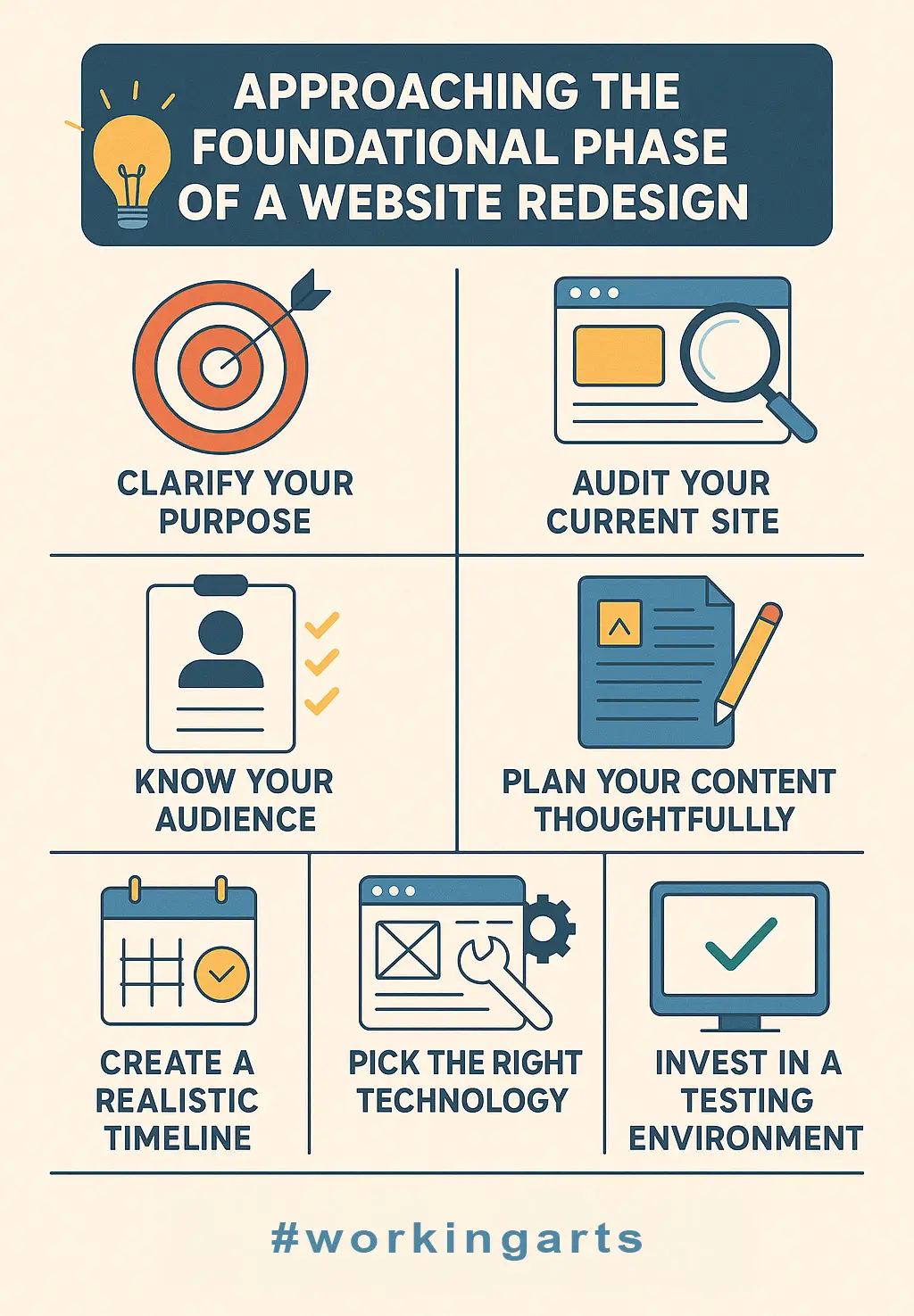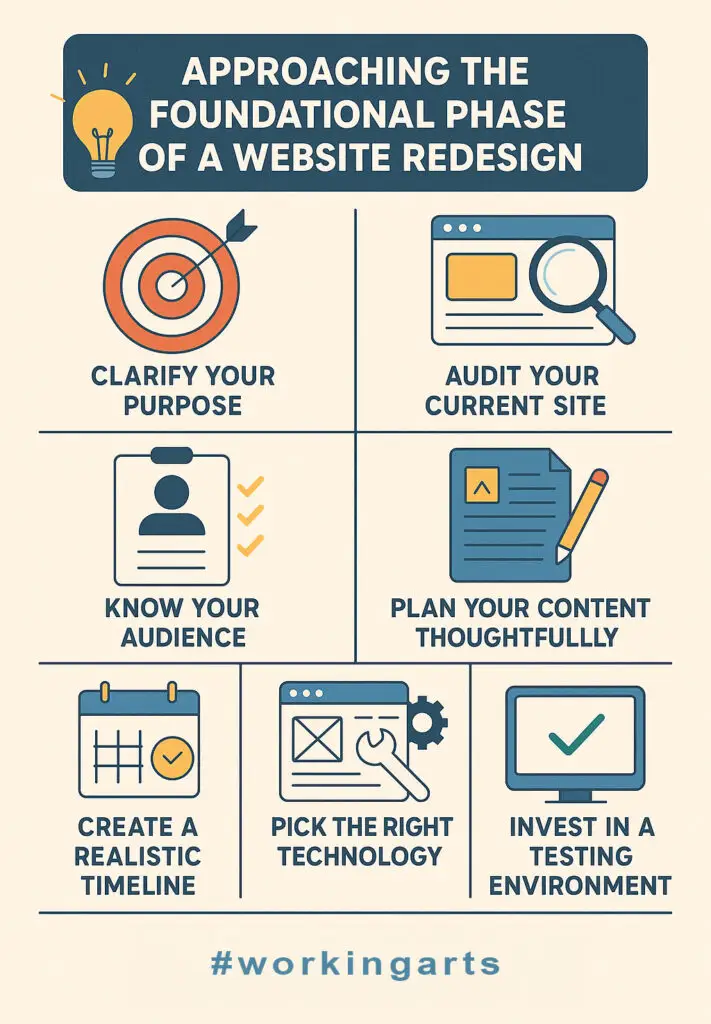Let’s take a deeper dive into how best to approach this foundational phase.
Clarify Your Purpose
Every successful website redesign begins with clarity of purpose. Ask yourself, why are we doing this? Perhaps your original site no longer aligns with your current mission or market position. Maybe your audience has evolved, your brand has matured, or your old technology has become obsolete. Clearly defining your goals will help inform the entire project: from design choices and technology selection, to how you structure and present your content.
Audit Your Current Site
Before creating new content or restructuring your site, take an inventory of your existing website. Identify what’s working well and what’s outdated or ineffective. An audit involves checking every corner of your site—navigation, imagery, content, and user experience. Tools like Google Analytics, SEMrush, Ahrefs, or Screaming Frog can help you evaluate your existing pages, highlighting valuable metrics such as visitor engagement, bounce rates, and popular landing pages.
Know Your Audience
Who visits your site, and why do they come? The heart of every great website redesign is audience understanding. Create user personas if you haven’t already—these fictional profiles represent typical website visitors, describing their needs, motivations, pain points, and behaviors. By focusing on real-world scenarios, you ensure that the redesign truly speaks to your users and serves their goals, while you can seamlessly guide them to review your solutions.
Plan Your Content Thoughtfully
As emphasized earlier, content is king. Content planning should precede visual design. Revisit your current content and map out which pieces to retain, revise, or retire. Clearly outline new content requirements and think strategically about SEO from the very beginning—after all, a beautiful site that no one can find doesn’t serve its purpose.
Involve subject matter experts early in the process, and ensure your content is aligned with the voice, tone, and message you intend to communicate to your audience. Craft a realistic editorial schedule, allowing ample time for internal reviews and approvals.
Create a Realistic Timeline
Website redesigns often stumble on overly ambitious schedules. To keep the project on track, create a realistic timeline that factors in the complexity of the site, your internal vetting processes, available resources, and potential roadblocks. Be sure to allow plenty of room for testing, revisions, and unexpected setbacks.
Wireframes and Prototyping
Before committing significant resources to visual design, consider developing wireframes or prototypes. These visual tools help stakeholders understand and agree on the site’s overall structure and user experience without getting distracted by visual design details. Feedback at this early stage is invaluable, as changes now are far less costly and more easily accommodated.
Pick the Right Technology
Website technology evolves rapidly, so it’s essential to select the platform best suited to your current and future needs. Your choice should balance ease of use, reliability, scalability, and security. Consider whether you require e-commerce features, specific integrations with CRM or marketing automation systems, multilingual capabilities, or sophisticated forms and interactive elements.
Invest in a Testing Environment
As mentioned in Part One, establishing robust development and staging environments separate from your live website is a best practice that can’t be overstated. This setup provides critical flexibility to test new features, safely update software, refine content, and preview design changes without risk of downtime or embarrassment from unexpected glitches.
Communicate and Collaborate
Website redesign is a team sport. Open communication among project stakeholders—designers, developers, marketers, executives—is crucial to avoid misunderstandings and costly delays. Regular check-ins, transparent reporting, and clearly defined roles can significantly smooth the process.
Stay Inspired and Flexible
Finally, stay inspired! A website redesign isn’t just about fixing problems; it’s an opportunity to reinvent your online presence, reconnect with your audience, and energize your team. Don’t lose sight of your original objectives but remain open to creative ideas and flexible enough to adapt as the project unfolds.
In our next installment, we’ll explore best practices around design trends, accessibility considerations, and user-centric experiences—helping you create a website that’s not only visually appealing but genuinely user-friendly.
Happy Redesigning!


